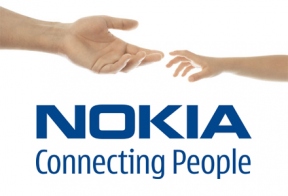Nokia continues to turn its ship around, slowly. The Finnish handset maker — once the world’s largest but hit bad by competition from Android device makers and Apple — today reported Q4 earnings that showed a marked improvement over last quarter. Revenues were $10.7 billion, on EPS of $0.08, beating street expectations. Analysts were expecting EPS of $0.06 on revenues of $10.55 billion. It is also reporting an operating profit of $585 million.
In an important sign to the markets — and to the credit ratings agencies — the company is also building up its net cash position. It says that it now has net cash of $5.9 billion (€4.4 billion), after increasing it this past quarter by €800 million. Nokia’s net cash over the last year had become a subject of scrutiny over the last year, as its device sales and profits disappointed and credit agencies worried that the company would have to dig into reserves to meet business obligations.
Despite the stronger performance, though, Nokia today said that it is proposing not to pay out a dividend for 2012. “Nokia’s Q4 financial performance combined with this dividend proposal further solidifies the company’s strong liquidity position,” it wrote in today’s statement. For 2011, the dividend was $0.27 per share.
Nokia’s two high-end smartphone lines, Windows Phone-based Lumia and Symbian-based handsets, brought in sales of €1.2 billion ($1.6 billion). Q4 net sales in its devices and services division were €3.9 billion ($5.1 billion), with total device volumes of 86.3 million units. Lower-end mobile phones accounted for more than half that in terms of value, and a whopping 92% in terms of volume: net sales for mobile phones was €2.5 billion ($3.3 billion), at 79.6 million units, 9.3 million of which were part of its lower-cost Asha line aimed at emerging markets and newer users.
Nokia said other devices and services generated net sales of €200 million. And it is still struggling to improve the bottom line in some of its newer lines of services businesses. Location and commerce, which includes the mapping division, posted an operating loss of €56 million ($75 million), although that is a significant improvement on last year’s $1.6 billion loss in the same division, although net sales in that division were actually down 9% to 378 million.
Nokia gave us a clue to some of these numbers earlier this month when it reported preliminary results stating that mobile devices “exceeded expectations”. At the time, it also noted sales of 4.4 million Windows Phone-based Lumia handsets, 2.2 million Symbian handsets, and 9.3 low-end smartphones in the Asha line, for a total of 15.9 million smartphones. Operating margins were also readjusted at the same time, to between break-even and positive 2%, from previous guidance of negative 6%, plus or minus four percentage points.
Part of the reason for better operational performance has to do with Nokia downsizing and cutting costs. That has included an overall plan for 10,000 job cuts announced in June 2012, including, most recently, 300 job cuts and an IT outsourcing deal with HCL and Tata to “align IT with its business focus.” In all, Nokia has laid off nearly 16,000 people in its devices and location business since Stephen Elop took over as CEO, although it still has some 46,000 people working in it.
The improvement in device sales and ongoing cost cuts are signs to the market that Nokia’s strategies to push its new lines of phones, de-emphasize its legacy lines, and right-size to new market conditions are working, if slowly. The news sent the company’s stock up by more than a dollar per share, and it still trading around $4.60 today.
As a point of comparison on devices, in Q3, Nokia sold 12.8 million smartphones in Q3, comprised of 2.9 million Lumia, 3.4 million Symbian and 6.5 million Asha devices, with Lumia dragged down, it said, by people awaiting the launch of Windows Phone 8. Nokia sold 4 million Lumia devices in Q2.
And these numbers are still far from those of the market leaders. Last night, Apple reported iPhone sales of 48 million units for the quarter — nearly four times as many smartphones as Nokia, and more than half of all its sales overall. Samsung is expected to report its numbers later this month.
More to come.
